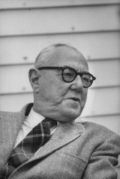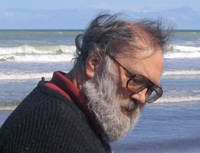Religion and the Modern Mind
by W.T. Stace
1952
Preface and Contents
[from the dust jacket]
According to Mr Stace, modern [1952] culture is the arena of a struggle between two antagonistic views of the universe and of man's place in it. One is the age-old religious vision of the world as a divine and moral order, governed by spiritual forces and values. The other, which has been produced by science, although it is not a part of science, views the world as controlled by nothing but blind natural laws and forces which are entirely indifferent to moral purposes and spiritual ideals. The latter view which may be called naturalism or secularism, is the characteristic content of the modern mind. The problem engendered by the struggle of these two world views is the subject of this book
The author first shows how, historically, the naturalistic view has been built up as a result of modern science. he discusses its consequences in the spheres of religion, morals, art, literature and philosophy; and then finally turns to the central problem which is thus posed for man's spiritual life.
In 1948, Mr Stace, a Professor of Philosophy at Princeton, published in the Atlantic Monthly an article entitled Man Against Darkness, which, because it urged that the naturalistic view of the world must be accepted, was widely interpreted as an attack on religion. In the present book he examines the problem how a belief in the essential core of religion, which he interprets not merely as "morality tinged with emotion", but as the acceptance of a divine principle in the world, and which he bel;ieves to be an essential element in man;s higher life, can be maintained without repudiating the modern scientific or natural view of the universe. He regards the book therefore as a defense of religion against skepticism. |
Preface
THE MIDDLE CHAPTERS OF THIS BOOK DISCUSS HOW SOME OF THE most important characteristics of the modern mind, with its special religious, moral, and philosophical problems and perplexities, can be traced back to the seventeenth century scientific revolution. But though the book is thus in some sense historically oriented it does not profess to be history, even intellectual history, as the professional historian uses that term. To understand these probblems it is necessary to know how they arose, but the emphasis of the book is always on logical connections between ideas, or the lack of logical connections, and on the problems themselves rather than on their history. And the purpose of the earlier chapters is to lead up to and into the final two chapters in which an attempt is made to throw light, so far as the writer can, on the solutions of the problems which have thus come to bedevil the modern world.
I owe some facts recounted in the earlier chapters to Professor
J. H. Randall's book, The Making of the Modern Mind. My great indebtedness to A. N. Whitehead's Science and the Modern World will be obvious to anyone who has read that book. My thanks are also due to Professor A. G. Shenstone, of the Princeton Physics Department, who kindly read through the chapter on the rise of modern science and helped me to make corrections in it, and to Mr. George Stevens, of J. B. Lippincott Company, who gave me helpful criticisms of my first draft of the whole book and especially made valuable major suggestions regarding the arrangement and expression of the ideas of the final chapters.
W.T. Stace, Princeton, January, 1952
|

W.T. Stace: Mysticism and Philosophy
W.T. Stace: Religion and the Modern Mind
W.T. Stace: Theory of Existence and Knowledge
The problem of evil assumes the existence of a world-purpose. What, we are really asking, is the purpose of suffering? It seems purposeless. Our question of the why of evil assumes the view that the world has a purpose, and what we want to know is how suffering fits into and advances this purpose. The modern view is that suffering has no purpose because nothing that happens has any purpose: the world is run by causes, not by purposes.
... W. T. Stace, Religion and the Modern Mind |
|



